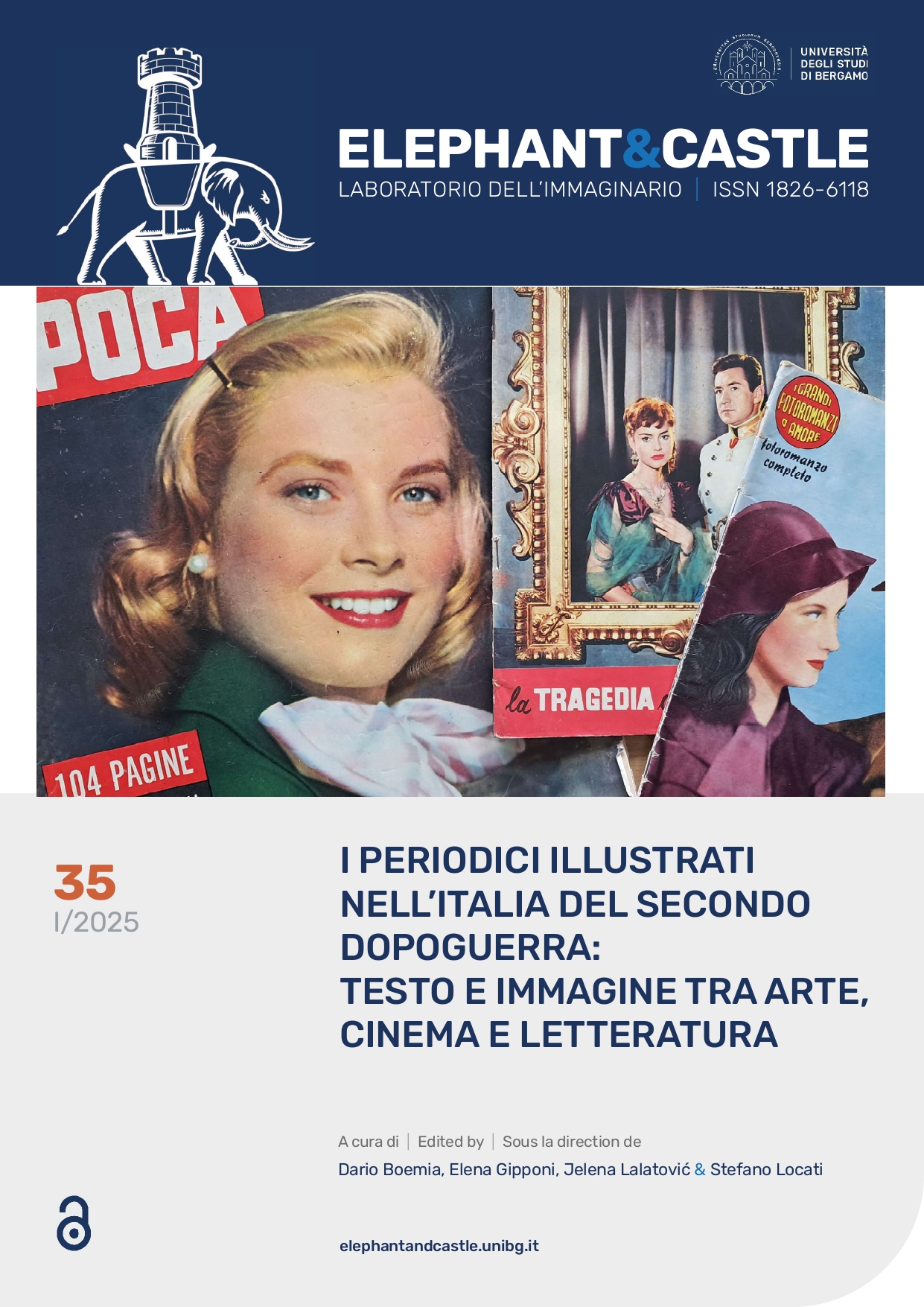I nove dell'"Orsa maggiore"
La svolta giovane del cineromanzo
DOI:
https://doi.org/10.62336/unibg.eac.35.566Parole chiave:
Cineromanzo, Orsa maggiore, Periodical studies, Fotoromanzo, periodiciAbstract
La pratica editoriale dei cineromanzi ha un’ampia diffusione sul territorio italiano all’inizio degli anni Cinquanta: fratelli minori dei più noti fotoromanzi, questi rotocalchi propongono ai lettori e alle lettrici trasposizioni a fumetti delle pellicole cinematografiche coeve, ricorrendo a fotogrammi e fotografie di scena. Nonostante gran parte dei cineromanzi di quel decennio si rivolgano a un pubblico femminile, promuovendo trasposizioni di film melodrammatici e sentimentali, alcune testate si differenziano tanto per i contenuti proposti, quanto per il pubblico di riferimento. Tra queste, un caso significativo è quello di Orsa Maggiore. Fotosettimanale di film per la gioventù. Il periodico, pubblicato per soli nove numeri tra aprile e giugno 1956, ha infatti il merito di ripensare il formato del cineromanzo, alla luce di un target di riferimento anagraficamente connotato, ovvero quello giovane. Il presente saggio mira a riflettere sull’avventura editoriale di Orsa Maggiore, ponendo l’attenzione su tre aspetti. In prima istanza, si indagano le politiche che guidano la selezione dei lungometraggi trasposti, le quali rimarcano il desiderio di rivolgersi a un pubblico diverso dal solito, attraverso storie votate all'avventura. In un secondo momento, si prendono in esame le strategie di adattamento che guidano il passaggio dallo schermo alla carta, le quali pongono maggiore attenzione alla morale. Infine, si riflette sulle rubriche di accompagnamento che, in una sorta di virtuale controcanto, offrono uno sguardo reale (o presunto tale) sul pubblico.
Downloads
Pubblicato
Come citare
Fascicolo
Sezione
Licenza
Copyright (c) 2025 Elephant & Castle

TQuesto lavoro è fornito con la licenza Creative Commons Attribuzione 4.0 Internazionale.






